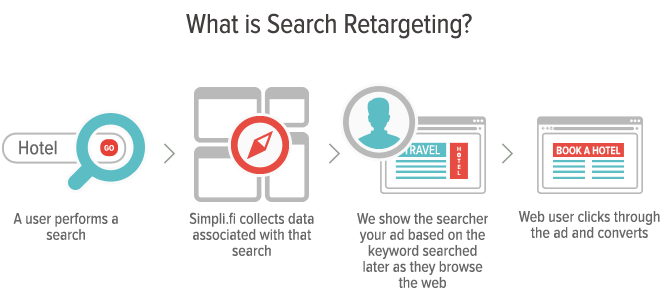In today’s world there are so many different ways to advertise. Odds are if you are a small business you are well aware, due to the many solicitations from every web marketing company under the sun. We wrote an article about the history of advertising in which we covered some of the core tenants of advertising. These things have not changed and continue to remain essential to any successful advertising strategy. Targeted Display adds a new level of targeting to the right consumers at the right time with the right message. RiverTown Multimedia offers many solutions if you have needs for digital marketing.
One thing that does change (and quite frequently) is the mediums that you choose to target your potential customers. Years ago businesses bought “banner ads” on websites in hopes of getting clicks, but the methodology was the same methodology as billboard advertising. You knew roughly how many people would come through and you would just hope that they saw your advertisement. In today’s world of big data we have so much data available about consumers that we can target ads to them in exciting new ways.
Let’s explore a few targeted display techniques
Demographic / Behavioral Targeting.

With demographic and behavioral targeted display your ad will be delivered to defined audience segments based on your marketing goals. Targeting ads to people based on who they are and not what sites they visit eliminate waste, creating better results. With the data available to you in your websites analytics and social insights you can gather a clear view of who your online audience is. This data will help you figure out who is most likely to engage with your messages online. So a Demographic targeted display campaign might look like this:
A targeted display campaign for a local garden center might target women 35–54 with interest in gardening.
Site Retargeting

Site retargeting is the practice of displaying online ads to consumers who have visited your website. These ads are displayed across the whole internet on websites / apps that sell ads on their website. This is an effective medium for many reasons, but the most significant is that the people seeing your ads have already expressed an interest in your business. Here is an example.
Have you ever been shopping on amazon to leave the website without making a purchase only to find that you start seeing amazon ads around the rest of the internet? Amazon knows you had an interest in that product and uses “site retargeting” to remind you to come back and complete your purchase.
Search Retargeting

Search retargeting is the practice of showing ads to consumer based on what types of searches they are performing. We leave digital fingerprints everywhere we go and with everything we do online. Many companies sell this consumer data to help monetize their websites. The anonymous searches performed on their website get sold to a data broker which inturns sells access to it for an advertiser to target ads to consumers. This would look something like this.
A online consumer is out researching a major purchase like a buying their first home. They are searching on sites like trulia for new homes in a certain area, they are searching on sites like about.com for first time homebuyer tips, etc. That consumer has left digital fingerprints indicating that they are likely in the market for a home purchase. Now when they start going to places across the rest of the internet, they may be served ads from local realtors through a targeted display campaign.
Contextual Retargeting

This form of targeted display is deployed based on keywords that are within article that consumers are reading. Back to our previous paragraph, we leave digital fingerprints across the internet even with the types of information we are consuming. These can be used as signals of consumer intent as well. An example of something like this would be.
Keeping with the new home purchase theme, an online consumer is reading blog posts and articles about first time home purchases. Perhaps they read about first time homebuyer loans or perhaps they are reading articles about how to make a good offer on a home. They now have left digital fingerprints indicating they are likely in the market for a home purchase and could start seeing ads from a local realtor.
Last thoughts on targeted display
There are many more ways that targeted display can target consumers across the internet. Each business in today’s world needs to find a way to target their potential customers online. Targeted display allows you to target active and passive consumers that are likely to convert to customers. By using targeted display in businesses advertising strategies, even a small business can leverage the power of big data.










